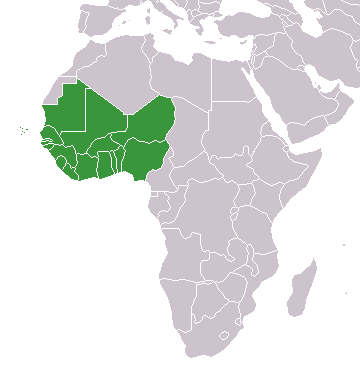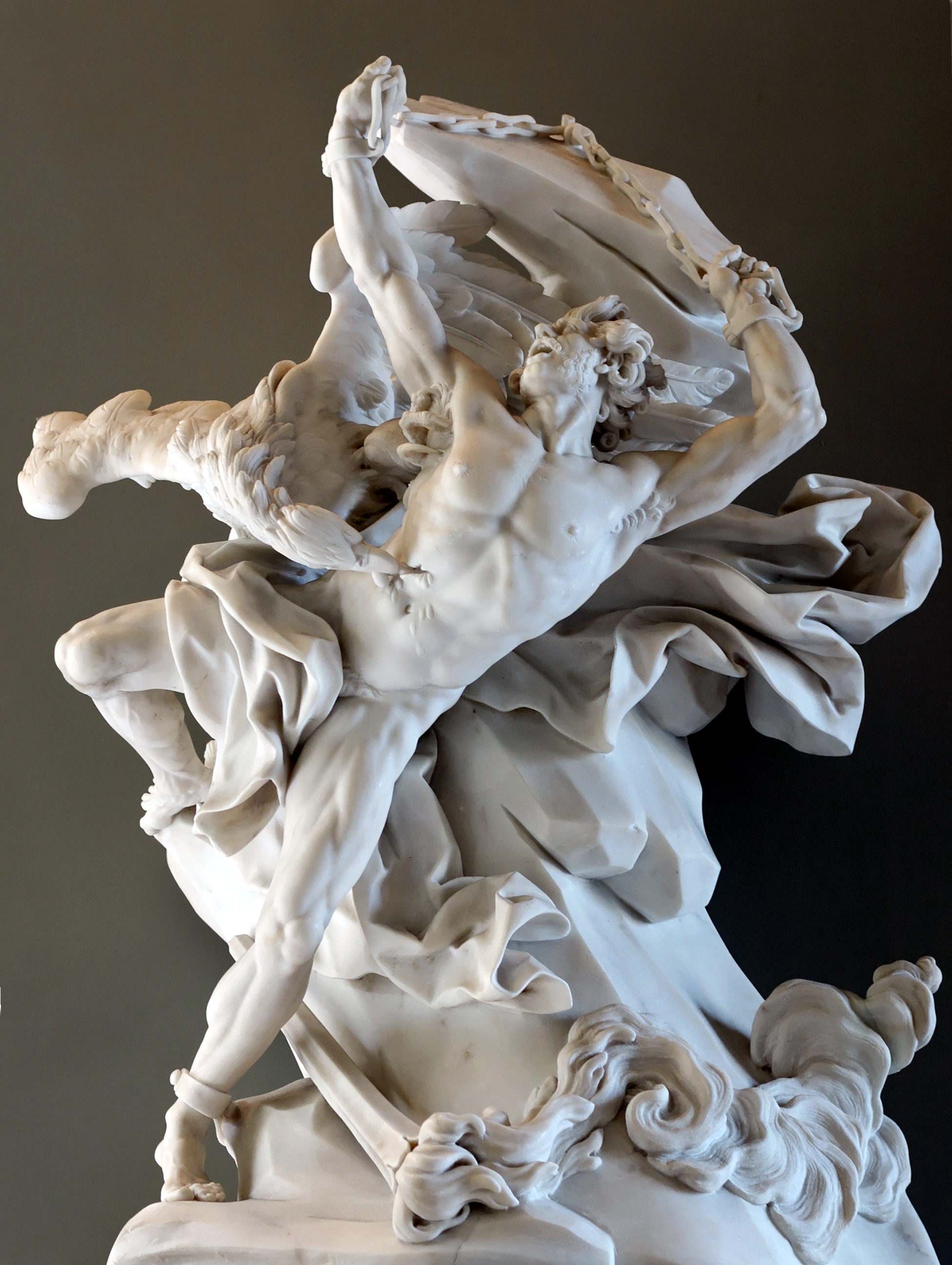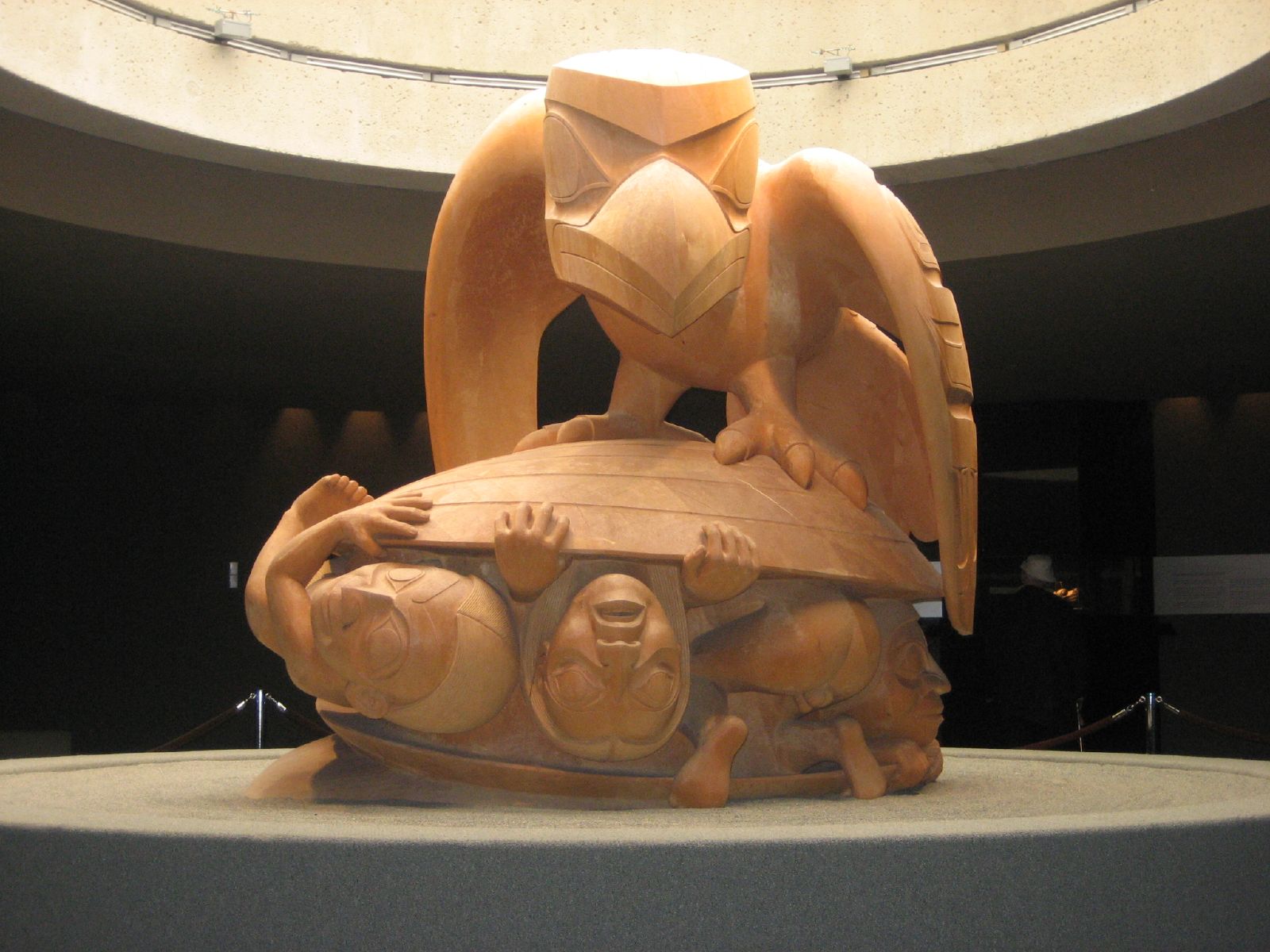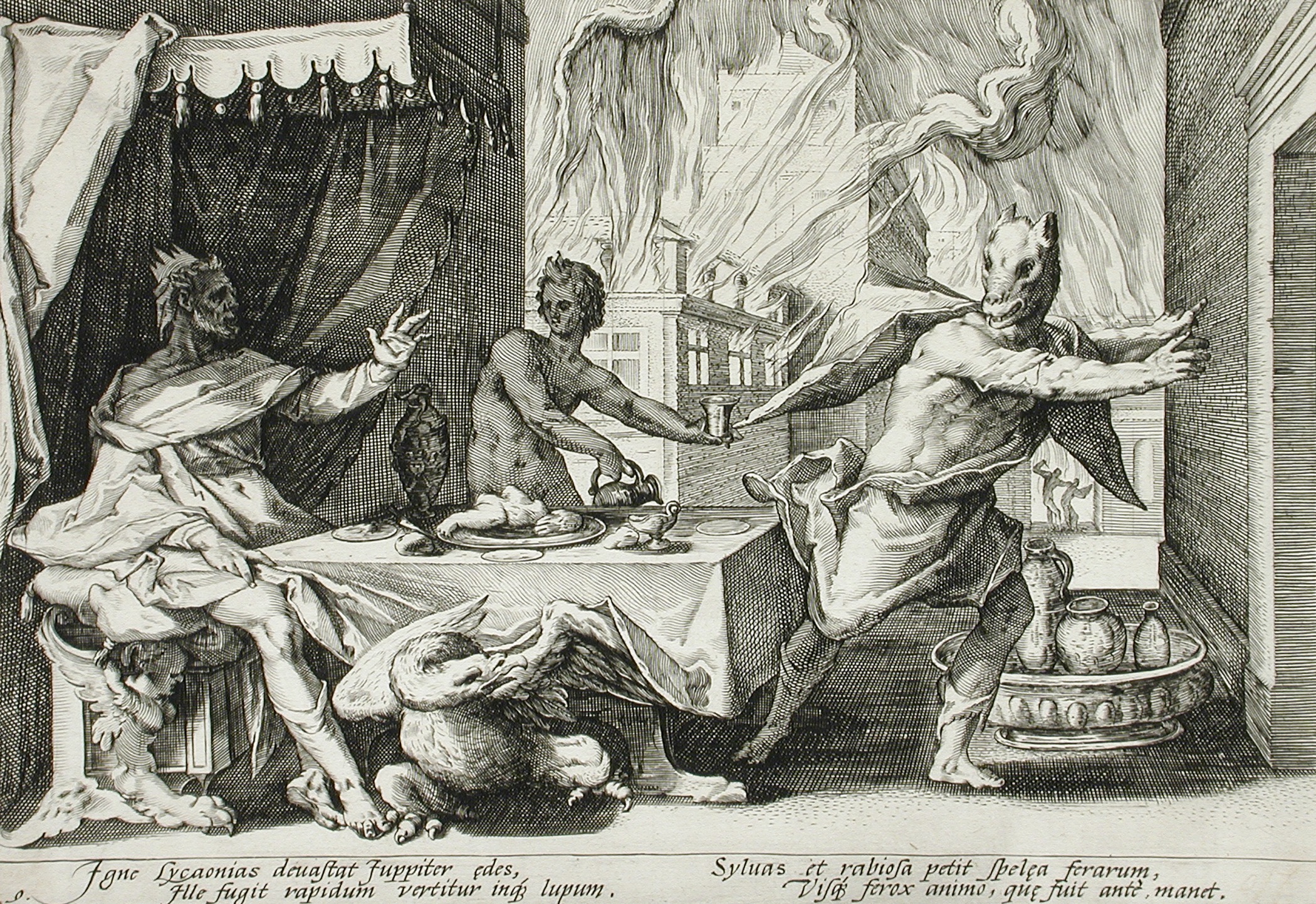|
Culture Hero
A culture hero is a mythological hero specific to some group (Culture, cultural, Ethnic group, ethnic, Religion, religious, etc.) who changes the world through invention or Discovery (observation), discovery. Although many culture heroes help with the creation of the world, most culture heroes are important because of their effect on the world after creation. A typical culture hero might be credited as the Theft of fire, discoverer of fire, agriculture, Folk music, songs, tradition, law, or Religious founder, religion, and is usually the most important legendary figure of a people, sometimes as the founder of its ruling dynasty. Culture heroes in mythology History of a culture hero The term "culture hero" was originated by historian Kurt Breysig, who used the German word ''heilbringer,'' which translates to ''savior''. Over the years, "culture hero" has been interpreted in many ways. Older interpretations by Breysig, Paul Ehrenreich, and Wilhelm Schmidt (linguist), Wilhelm Sch ... [...More Info...] [...Related Items...] OR: [Wikipedia] [Google] [Baidu] |
Mythological
Myth is a genre of folklore consisting primarily of narratives that play a fundamental role in a society. For scholars, this is very different from the vernacular usage of the term "myth" that refers to a belief that is not true. Instead, the veracity of a myth is not a defining criterion. Myths are often endorsed by religious (when they are closely linked to religion or spirituality) and secular authorities. Many societies group their myths, legends, and history together, considering myths and legends to be factual accounts of their remote past. In particular, creation myths take place in a primordial age when the world had not achieved its later form. Origin myths explain how a society's customs, institutions, and taboos were established and sanctified. National myths are narratives about a nation's past that symbolize the nation's values. There is a complex relationship between recital of myths and the enactment of rituals. Etymology The word "myth" comes from Ancient ... [...More Info...] [...Related Items...] OR: [Wikipedia] [Google] [Baidu] |
Adolf Ellegard Jensen
Adolf Ellegard Jensen (1 January 1899 – 20 May 1965) was one of the most important German ethnologists of the first half of the 20th century. Jensen's main research interests were myth, ritual and cult. He furthered the theory of Cultural Morphology founded by Leo Frobenius. Jensen is mostly known for his research on religious sacrifice that led him to the introduction of the concept of Dema Deity. His best-known work is 'Myth and Cult Among Primitive Peoples', published in 1951. Life Jensen studied physics in Kiel and in Bonn, concluding his studies with a dissertation on Max Planck and Ernst Mach in 1922. One year later he became acquainted with Leo Frobenius and became his faithful disciple. As a member of the Institute for Cultural Morphology founded by Frobenius and known today as Frobenius Institute, Jensen took part in research journeys to South Africa, Libya, Southern Ethiopia and Seram Island in the Moluccas. He became a full-time ethnologist after publishing a pa ... [...More Info...] [...Related Items...] OR: [Wikipedia] [Google] [Baidu] |
Western Africa
West Africa, also known as Western Africa, is the westernmost region of Africa. The United Nations defines Western Africa as the 16 countries of Benin, Burkina Faso, Cape Verde, The Gambia, Ghana, Guinea, Guinea-Bissau, Ivory Coast, Liberia, Mali, Mauritania, Niger, Nigeria, Senegal, Sierra Leone, and Togo, as well as Saint Helena, Ascension and Tristan da Cunha ( United Kingdom Overseas Territory).Paul R. Masson, Catherine Anne Pattillo, "Monetary union in West Africa (ECOWAS): is it desirable and how could it be achieved?" (Introduction). International Monetary Fund, 2001. The population of West Africa is estimated at around million people as of , and at 381,981,000 as of 2017, of which 189,672,000 were female and 192,309,000 male.United Nations Department of Economic and Social Affairs, Population Division (2017). World Population Prospects: The 2017 Revision, custom data acquired via website/ref> The region is demographically and economically one of the fastest growing on t ... [...More Info...] [...Related Items...] OR: [Wikipedia] [Google] [Baidu] |
Prometheus
In Greek mythology, Prometheus (; , , possibly meaning "forethought")Smith"Prometheus". is a Titans, Titan. He is best known for defying the Olympian gods by taking theft of fire, fire from them and giving it to humanity in the form of technology, knowledge and, more generally, civilization. In some versions of the myth, Prometheus is also credited with the Creation of life from clay, creation of humanity from clay. He is known for his intelligence and for being a champion of mankind and is also generally seen as the author of the human arts and sciences. He is sometimes presented as the father of Deucalion, the hero of the flood story. The punishment of Prometheus for stealing fire from Olympus and giving it to humans is a subject of both ancient and Prometheus in popular culture, modern culture. Zeus, king of the Olympian gods, condemned Prometheus to eternal torment for his transgression. Prometheus was bound to a rock, and an eagle—the emblem of Zeus—was sent to eat hi ... [...More Info...] [...Related Items...] OR: [Wikipedia] [Google] [Baidu] |
Raven
A raven is any of several large-bodied passerine bird species in the genus '' Corvus''. These species do not form a single taxonomic group within the genus. There is no consistent distinction between crows and ravens; the two names are assigned to different species chiefly by size. The largest raven species are the common raven and the thick-billed raven; these are also the largest passerine species. Etymology The term ''raven'' originally referred to the common raven (''Corvus corax''), the widespread species of the Northern Hemisphere. The modern English word ''raven'' has cognates in all other Germanic languages, including Old Norse (and subsequently modern Icelandic) and Old High German , all of which descend from Proto-Germanic . Collective nouns for a group of ravens include a "conspiracy", a "treachery", a "rave" and an "unkindness"; in practice, most people use the more generic "flock". Extant species * ''Corvus albicollis'' – White-necked raven (eastern and s ... [...More Info...] [...Related Items...] OR: [Wikipedia] [Google] [Baidu] |
Haida Mythology
The Haida are one of the indigenous peoples of the Pacific Northwest Coast of North America. Their national territories lie along the west coast of Canada and include parts of south east Alaska. Haida mythology is an indigenous religion that can be described as a nature religion, drawing on the natural world, seasonal patterns, events and objects for questions that the Haida pantheon provides explanations for. Haida mythology is also considered animistic for the breadth of the Haida pantheon in imbuing daily events with . There are innumerable Haida supernatural beings, or , including prominent animal crests, wind directions, and legendary ancestors. John R. Swanton, while documenting Haida beliefs as part of the Jesup North Pacific Expedition recorded that the highest being in all Haida mythology and the one who gave power to the was , translated as 'Power-of-the-Shining-Heavens'. Some have the ability to transform between animal and human forms while others do not. In the ... [...More Info...] [...Related Items...] OR: [Wikipedia] [Google] [Baidu] |
Rabbit
Rabbits are small mammals in the family Leporidae (which also includes the hares), which is in the order Lagomorpha (which also includes pikas). They are familiar throughout the world as a small herbivore, a prey animal, a domesticated form of livestock, and a pet, having a widespread effect on ecologies and cultures. The most widespread rabbit genera are '' Oryctolagus'' and '' Sylvilagus''. The former, ''Oryctolagus'', includes the European rabbit, ''Oryctolagus cuniculus'', which is the ancestor of the hundreds of breeds of domestic rabbit and has been introduced on every continent except Antarctica. The latter, ''Sylvilagus'', includes over 13 wild rabbit species, among them the cottontails and tapetis. Wild rabbits not included in ''Oryctolagus'' and ''Sylvilagus'' include several species of limited distribution, including the pygmy rabbit, volcano rabbit, and Sumatran striped rabbit. Rabbits are a paraphyletic grouping, and do not constitute a clade, as ha ... [...More Info...] [...Related Items...] OR: [Wikipedia] [Google] [Baidu] |
Coyote
The coyote (''Canis latrans''), also known as the American jackal, prairie wolf, or brush wolf, is a species of canis, canine native to North America. It is smaller than its close relative, the Wolf, gray wolf, and slightly smaller than the closely related eastern wolf and red wolf. It fills much of the same ecological niche as the golden jackal does in Eurasia; however, the coyote is generally larger. The coyote is listed as Least Concern, least concern by the International Union for Conservation of Nature, due to its wide distribution and abundance throughout North America. The species is versatile, able to adapt to and expand into environments modified by humans; urban coyotes are common in many cities. The coyote was sighted in eastern Panama (across the Panama Canal from their home range) for the first time in 2013. The coyote has 19 recognized subspecies. The average male weighs and the average female . Their fur color is predominantly light gray and red or fulvous int ... [...More Info...] [...Related Items...] OR: [Wikipedia] [Google] [Baidu] |
Indigenous Peoples Of The Americas
In the Americas, Indigenous peoples comprise the two continents' pre-Columbian inhabitants, as well as the ethnic groups that identify with them in the 15th century, as well as the ethnic groups that identify with the pre-Columbian population of the Americas as such. These populations exhibit significant diversity; some Indigenous peoples were historically hunter-gatherers, while others practiced agriculture and aquaculture. Various Indigenous societies developed complex social structures, including pre-contact monumental architecture, organized city, cities, city-states, chiefdoms, state (polity), states, monarchy, kingdoms, republics, confederation, confederacies, and empires. These societies possessed varying levels of knowledge in fields such as Pre-Columbian engineering in the Americas, engineering, Pre-Columbian architecture, architecture, mathematics, astronomy, History of writing, writing, physics, medicine, Pre-Columbian agriculture, agriculture, irrigation, geology, minin ... [...More Info...] [...Related Items...] OR: [Wikipedia] [Google] [Baidu] |
Etiology
Etiology (; alternatively spelled aetiology or ætiology) is the study of causation or origination. The word is derived from the Greek word ''()'', meaning "giving a reason for" (). More completely, etiology is the study of the causes, origins, or reasons behind the way that things are, or the way they function, or it can refer to the causes themselves. The word is commonly used in medicine (pertaining to causes of disease or illness) and in philosophy, but also in physics, biology, psychology, political science, geography, cosmology, spatial analysis and theology in reference to the causes or origins of various phenomena. In the past, when many physical phenomena were not well understood or when histories were not recorded, myths often arose to provide etiologies. Thus, an etiological myth, or origin myth, is a myth that has arisen, been told over time or written to explain the origins of various social or natural phenomena. For example, Virgil's ''Aeneid'' is a national myth ... [...More Info...] [...Related Items...] OR: [Wikipedia] [Google] [Baidu] |
Trickster
In mythology and the study of folklore and religion, a trickster is a character in a story (god, goddess, spirit, human or anthropomorphisation) who exhibits a great degree of intellect or secret knowledge and uses it to play tricks or otherwise disobey normal rules and defy conventional behavior. Mythology Tricksters, as archetypal characters, appear in the myths of many different cultures. Lewis Hyde describes the trickster as a "boundary-crosser".Hyde, Lewis. ''Trickster Makes This World: Mischief, Myth, and Art''. New York: Farrar, Straus and Giroux, 1998. The trickster crosses and often breaks both physical and societal rules: Tricksters "violate principles of social and natural order, playfully disrupting normal life and then re-establishing it on a new basis." Often, this bending and breaking of rules takes the form of tricks and thievery. Tricksters can be cunning or foolish or both. The trickster openly questions, disrupts and mocks authority. Many cultures have ta ... [...More Info...] [...Related Items...] OR: [Wikipedia] [Google] [Baidu] |
Shapeshifting
In mythology, folklore and speculative fiction, shapeshifting is the ability to physically transform oneself through unnatural means. The idea of shapeshifting is found in the oldest forms of totemism and shamanism, as well as the oldest existent literature and Epic poetry, epic poems such as the ''Epic of Gilgamesh'' and the ''Iliad''. The concept remains a common literary device in modern fantasy, children's literature and popular culture. Examples of shapeshifters are vampires and werewolves. Folklore and mythology Popular shapeshifting creatures in folklore are werewolf, werewolves and vampires (mostly of European, Canadian, and Native American/early American origin), ichchhadhari naag (shape-shifting cobra) of India, shapeshifting fox spirits of East Asia such as the huli jing of China, the obake of Japan, the Navajo skin-walkers, and gods, goddesses and demons and demonesses such as the Norse mythology, Norse Loki or the Greek mythology, Greek Proteus. Shapeshifting to th ... [...More Info...] [...Related Items...] OR: [Wikipedia] [Google] [Baidu] |










